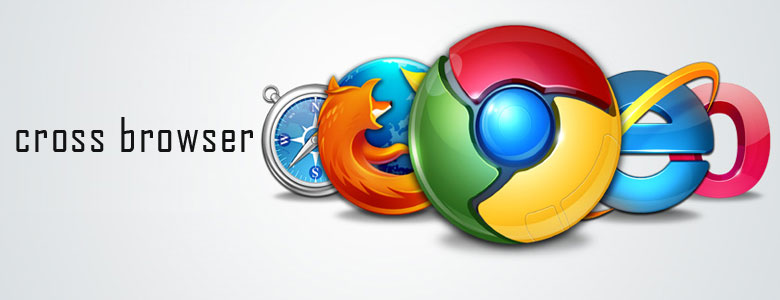Buzz Haven: Your Source for Trending Insights
Stay updated with the latest buzz in news, trends, and lifestyle.
When Browsers Collide: The Chaos of Cross-Browser Compatibility
Discover the chaotic world of cross-browser compatibility and learn how to navigate the wild side of web design like a pro!
Understanding Cross-Browser Compatibility: Why It Matters
Cross-browser compatibility refers to the ability of a website or web application to function consistently across different web browsers. Given the wide variety of browsers like Chrome, Firefox, Safari, and Edge, ensuring that your site performs well on each of them is crucial. Variances in how these browsers interpret HTML, CSS, and JavaScript can lead to discrepancies in layout, functionality, and overall user experience. This makes understanding cross-browser compatibility essential for web developers and businesses, as a negative experience could drive potential customers away.
Moreover, cross-browser compatibility is not just about aesthetics but also impacts SEO rankings. Search engines like Google prioritize websites that offer a seamless experience across various platforms. Websites that fail to load properly on certain browsers may experience higher bounce rates, ultimately affecting their position in search results. To ensure maximum reach and effectiveness, consider implementing rigorous testing and troubleshooting techniques to achieve a fully compatible and responsive web experience. By prioritizing cross-browser compatibility, you enhance your site's accessibility and increase user engagement.

Top Tools and Techniques for Testing and Debugging Cross-Browser Issues
When it comes to testing and debugging cross-browser issues, utilizing the right tools can make all the difference in ensuring a seamless user experience. One popular choice is BrowserStack, which allows developers to test their websites across real devices and browsers without needing to maintain an array of physical devices. Another essential tool is Chrome DevTools, which provides powerful debugging capabilities for understanding how your site performs in different environments. By leveraging these tools, developers can identify and resolve compatibility issues much faster, leading to higher quality web products.
In addition to robust tools, applying effective techniques is crucial for successful cross-browser testing. Start by employing a systematic approach that includes creating a comprehensive checklist for the browsers you want to support. This should cover critical aspects such as layout rendering, CSS styling, and JavaScript functionality. Additionally, consider using feature detection libraries like Modernizr to assess browser capabilities dynamically. By combining these best practices with efficient tools, you can significantly reduce the time spent on debugging and ensure a consistent experience across all platforms.
Common Cross-Browser Compatibility Challenges and How to Overcome Them
Cross-browser compatibility refers to the ability of a website or web application to function correctly across different web browsers. One common challenge developers face is CSS discrepancies, where styling appears differently on various browsers. For instance, some browsers may not support specific CSS properties or have unique rendering engines that interpret styles differently. To overcome these challenges, developers should utilize CSS resets and frameworks like Bootstrap that offer a more uniform styling experience across multiple platforms.
Another challenge is JavaScript compatibility. Different browsers may support various JavaScript features, leading to functionality issues. Developers can address this by using transpilers like Babel to convert modern JavaScript code into a version compatible with older browsers. Additionally, employing feature detection libraries such as Modernizr helps identify which features are supported in the user's browser, allowing for graceful degradation or progressive enhancement strategies to ensure a seamless user experience.